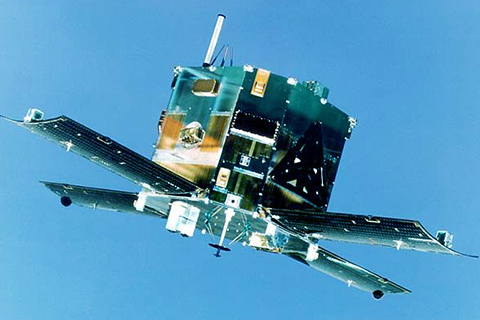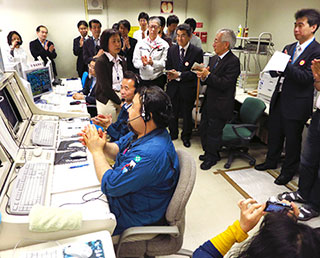About Aurora Observation Satellite "AKEBONO" (EXOS-D)

|
AKEBONO observes the physical processes taking place in geospace and collects detailed data in collaboration with the ground stations.AKEBONO (EXOS-D) is an aurora observation satellite launched by the M-3SII-4 launch vehicle from Uchinoura Space Center (USC) on February 22, 1989. AKEBONO’s objective is to investigate the magnetospheric phenomena associated with the acceleration process of aurora particles. Aurora is a luminous phenomenon that occurs when solar-wind particles trapped in the magnetosphere collide with Earth’s atmospheric particles. A better understanding of this phenomenon will help us understand the physical processes taking place in the Sun and the reaction on Earth. Lauch date: February 22, 1989 |
|---|
Project Topics
AKEBONO operation completed

|
JAXA stopped sending and receiving radio waves to and from the Aurora Observation Satellite “AKEBONO” (EXOS-D) at 3:59 p.m. on April 23, 2015 to terminate its operation. |
|---|
Characteristics of Aurora Observation Satellite "AKEBONO" (EXOS-D)
AKEBONO is an ambitious satellite carrying a number of "world-first" technologies.
|
AKEBONO carries eight sets of instruments for scientific observation. It also has a radiation monitor, and anti-radiation technology that has been applied to a satellite for the first time in the world. This technology provides protection against radiation, even in the near-Earth radiation belt, as it is designed to tolerate about ten times the intensity withstood by conventional satellites. Other world-first technology applied to AKEBONO includes an extension mast for antenna and surface electrical conduction processing, to gain better conductivity and protection from charged particles. The GEOTAIL and NOZOMI satellites have inherited these technologies. GEOTAIL operates in the world-best quiet environment, which has never before been possible without the electromagnetic compatibility test conducted by AKEBONO. |

|
|---|
The AKEBONO has operated for more than 20 years. Although the aurora imager camera has deteriorated due to the severe radioactive environment, all the other instruments are in good order. The direction of the major magnetic field of the Sun is known to reverse in a 22-year cycle. The Sun’s activeness, which is typically measured by the number of sunspots, increases and decreases twice in this 22-year cycle. In other words, the Sun’s behavior is changing in an 11-year cycle.
The AKEBONO attained continued data acquisition for 26 years through its onboard radiation monitor and plasma monitor to clarify changes of the
“Van Allen radiation belt” due to the Sun’s activities.
Major Characteristics
| International Designation Code | 1989-016A |
|---|---|
| Launch Date | 08:30, February 22, 1989 (JST) |
| Launch Vehicle | M-3SII-4 |
| Location | Kagoshima Space Center (Uchinoura) |
| Shape | 100cm high, 126cm long from face to face Octagonal cylinder with four solar-array paddles Equipped with 30m-long antenna and two (5m and 3m) extendable masts |
| Weight | Approx. 295 kg |
| Orbiter | Highly elliptical |
| Altitude | Perigee 275 km, Apogee 10,500 km |
| Inclination | 75 degrees |
| Period | 211 minutes |
Mission talk by team leaders

|
Project Manager Ayako MatsuokaHere are messages from Project Managers. |
|---|